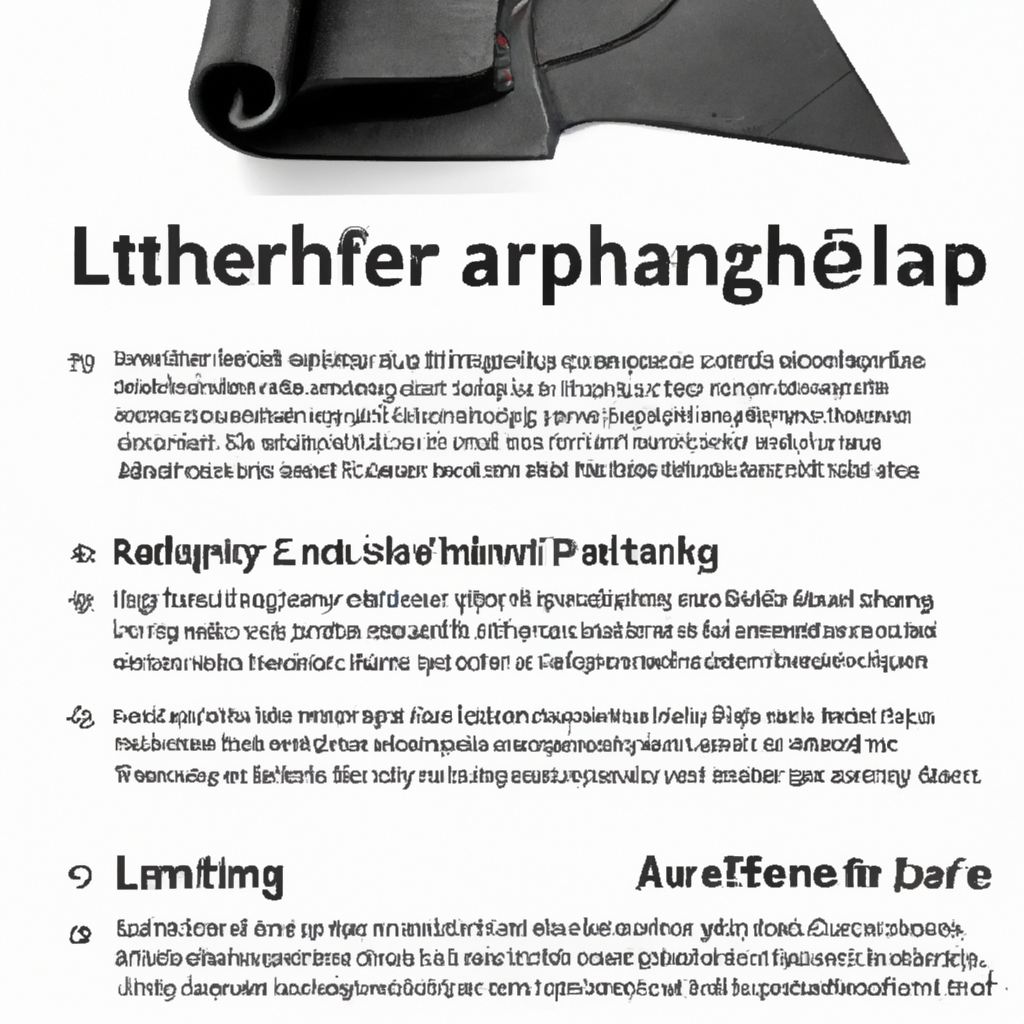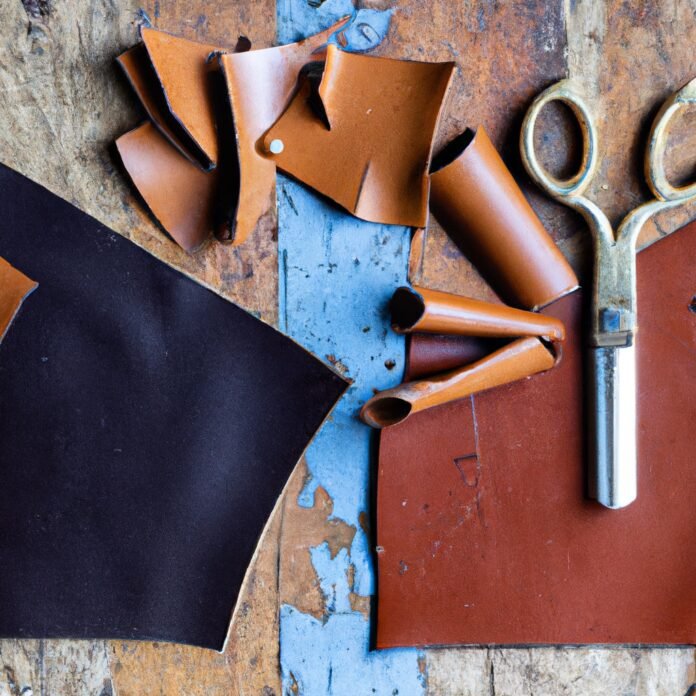From the traditional artisans of the North American prairie to the modern makers crafting custom leather goods, leathercrafting has become a prominent DIY art form. The North American artisans that practice such a craft are not only reviving traditional leather-working techniques but also exploring innovative and creative ways to create one-of-a-kind items. These artisans have acquired an impressive skill at designing and crafting custom leather goods from raw hides and natural materials. In this article, we’ll explore the incredible works of North American artisans in the leathercrafting world and take a look into their incredible DIY projects.
1. Crafting a Lasting Legacy: North American Leathercrafting
Leathercrafting is a craft and a trade often passed down from generation to generation. From the earliest days of North America, leathercrafting has been an integral part of cultural identity, even if not officially recognized. It is a symbolic expression of individualism, resilience, and perseverance.
Over the centuries, leathercrafting techniques have been honed to excellence. North American leatherworkers have risen to the top of the craft, creating innovative designs, intricate stitching, and sophisticated finishes that set the standard for modern leathercraft.
The timelessness of leathercrafting is evident in creations that have been passed down through the ages. Whether it’s a traditional moccasin or a custom belt, these objects are not just pieces of art but living vessels of memories. No matter how many years have passed, these items are infused with stories passed on from one generation to the next.
Innovations such as the production of leather from non-animal materials and eco-friendly techniques are helping preserve the craft’s future. From the wilds of the old frontier towns to the modern metropolis, North American leathercraft continues to endure, with each artist passing on their legacy and knowledge to future generations.
Benefits of North American Leathercrafting:
- It embodies a timeless, classic style.
- It is an enduring part of North American culture.
- It is a symbol of individualism and resilience.
- It is a sustainable craft.
- It has passed down from generation to generation.
- It is an investment that will last a lifetime.

2. Celebrating the Creative Culture of Leathercrafting DIY
Leathercrafting has a long and vibrant history, so it’s no surprise that DIY leather projects are gaining in popularity. Of course, it’s not just about creating the perfect bag or belt – it’s about embracing the creative culture of leatherworking. Here are some ways to do just that:
- Explore Different Leather Types: What you create depends on the type of leather you use. From Exotic Alligator to Edelman™ veg-tanned leather, each has its own unique characteristics, so get to know some of the most popular options to help bring out your creative side.
- Choose the Right Tools: It’s not just the leather and the design that will make your project great, you’ll need to make sure you have the right tools to execute your vision. From punches and nippers to stitching needles and chisels, mounting boards and creasers, make sure to invest in the gear you need to get the job done.
- Learn Different Working Methods: Show your work off to its fullest potential by mastering a few different techniques. You could try basic hand-stitching, wooden-dyeing, tooling and embossing, or even electroplating and beading. Some of these techniques require special tools and materials, so it’s worth doing your research.
- Keep a Record: As with any craft, practice makes perfect. Once you’ve gotten the hang of it, take a few minutes to reflect on what you’ve done and analyzed. You’ll be amazed at what you’ve achieved and no doubt draw some inspiration for your next project.
So, why not give leatherworking a go! It’s an excellent way to explore your creative side while producing beautiful works of art. Who knows, you just may be able to make a living from it!
And if you’re looking for project ideas to help get you started, there are plenty of leathercraft tutorials and resources out there. Keep an eye out for leather crafting classes or workshops that can help you on your journey.
3. Unlocking the Inspirational Potential of Traditional Leatherworking Techniques
Leatherworking is one of the oldest crafts on the planet. It’s artistry and skill held in its techniques have been passed down through generations. Despite its rich history, it often gets overlooked in the modern world. Here, we’ll explore how to tap into traditional leatherworking techniques in order to review and apply the most inspirational and creative elements of the craft.
- Consider the origins of the craft – delve into how and why it became a part of leatherworking culture, and mingled with our ancestors’ lives.
- Take a look at the tools associated with leatherworking – which ones have become archaic, and which might still be of use to us?
- Analyze the patterns utilized in traditional leatherworking – do any of them still contain hints of their original artistry, and just how is it translated into modern style?
The beauty of traditional leatherworking techniques lies in their adaptability. Ancient leatherworking processes can be reinvented or even modified to suit specific projects – modern tools are a great tool to help unleash the potential of these traditional techniques. Reinterpretation of traditional techniques can provide inspiration, as can taking a look at how the techniques have been re-imagined in date.
An awareness of the present can help inform future projects. Keeping up-to-date with modern design trends, as well as experimenting with different processes could give the traditional methods a fresh outlook.
Don’t be afraid to combine traditional and modern – when done right, this fusion of old and new can create something truly unique. Making your own distinctive interpretation of the techniques can be a huge source of inspiration, and can help breathe new life into the leatherworking craft.
4. Exploring the Unique Processes of North American Artisans
For centuries, artisans of North America have crafted unique and exquisite pieces of art, from ornate pottery to intricate weaving. From the east coast to the west, each region has its own unique style of craftsmanship, developed over time from different cultural practices and lifestyles. From wood carvers of the Northwest Coast to glassblowers of the Great Lakes region, North American artisans have used their creativity to shape their own unique process.
One such unique process is dim sum doll making from the San Francisco Bay Area. This type of doll-making dates back centuries, and is still considered an important cultural practice today. Utilizing plants and other natural materials crafted into unique shapes and embellished with fabric, thread, and other materials, dim sum doll makers create one-of-a-kind, highly detailed sculptures of human figures and animals. The end result is an icon of culture, tradition, and art that is as unique as the artist.
In the south, the tradition of basket weaving has been passed down from generation to generation. With the vast natural resources found in the area, the artisans of the region have made use of plant-based materials such as reeds, bark, and vines to make beautiful vessels. These baskets range from small and utilitarian to large and decorative, and are found all over the south and beyond.
In New England, the maritime traditions of the region are reflected in the art of scrimshaw. Scrimshaw is the practice of etching intricate designs into ivory and bone, a skill that originally gained popularity among seafaring folk. Today, artisans continue to carry on the tradition, etching beautiful designs of sea creatures, ships, and other coastal scenes into a variety of materials.
From northern California’s potters to Saskatchewan’s quill workers, North American artisans have used their skills and creativity to create unique and beautiful works of art. With each artisan comes a unique process, as different materials and cultures shape the steps and techniques of the craftsmanship. No matter the region or the material being used, North American artisans continue the tradition of creating exceptional works of art.
Leathercrafting is an incredibly intricate art form, which requires a tremendous amount of skill and dedication to master. Though DIY leathercrafting has been for years a beloved activity among North Americans, it is far more than a hobby; it is an incredible testament to the creative expression of the human spirit, and a reminder of the strength and power of the North American artisan.



